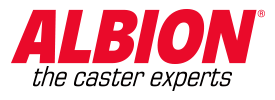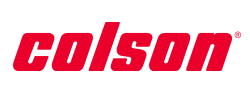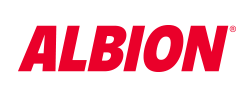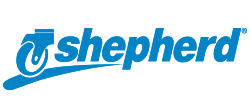For those unfamiliar with the broad world of casters, we understand that navigating the available options may seem daunting. We hope that the definitions presented on this page will help provide a better understanding of various terms and concepts regarding casters and wheels.
Caster Type – describes the main structure and functionality of a caster. A caster is divided into two main parts: rig (mounting option, raceway [if swivel], legs), and wheel (wheel, bearing, axles). A caster may include optional brakes (as add-on accessories, or integrated into rig).
Swivel – a caster that can move forward or backward, and can rotate to change directions. Learn more about swivel caster anatomy.
Rigid – a caster that cannot rotate to change directions; capable of straight-line movement
Brake – a caster with an added accessory to stop one or more types of movement. Many brakes engage with the caster wheel to prevent wheel rotation, thus preventing forward/backward motion. As the swivel mechanism is not engaged, under enough lateral pressure, the caster could still rotate. Depending on how the brake engages, rigid casters may even have brakes. Some brakes will engage both caster wheel and swivel mechanism to prevent any motion; we call these “total lock” brakes.
Swivel Locks – Swivel Locks are accessories which will engage with the swivel mechanism, preventing swivel rotation. A swivel lock can ease control when long, straight-line movement is required. Swivel locks may be able to be paired with wheel-contact brakes.
The Rig
A rig is the complete assembly of fastening, raceway ball bearings, washers, kingpin, and legs. A rig may or may not include wheel bearings, axle, and brake components.
Kingpin – A threaded nut and bolt – or staked component – that holds the swivel assembly together
Spun Rivet – Rivet is formed with orbital forming tool, compacting and spreading material out, providing a strong bond
Star-Staked Rivet – Rivet is hit once with a star-shaped tool
Nut/Bolt – A nut and bolt are used as the kingpin
Kingpinless – Swivel assembly is held together by ball bearings, securing top plate and legs together through integrated raceways.
Raceway – A housing with tracks or grooves in which ball bearings reside
Upper Raceway – top section that holds ball bearings in place in both single and dual race casters
Lower Raceway – bottom section that holds lower raceway ball bearings in place on dual race casters
Ball Bearings – small steel balls upon which fork and fastening swivel
Single Race – A single row of ball bearings in the raceway
Dual Race – Two rows of ball bearings move independently through two levels of ball races
Fork (also: Horn, Yoke, Frame) – portion of a caster which attaches the wheel to the: swivel sections and fastening on a swivel caster; or, the fastening on a rigid caster. Forks may be stamped or welded.
Stamped – A single piece of metal is formed in a press. The Albion 02 Series, P2 Series, and DC Dolly Casters are examples of casters with stamped forks.
Welded – A set of legs is attached to a yoke base/ball cup via welding. A majority of our casters are welded.
Legs – Two parts extruding from the yoke by which the wheel(s) is attached
Yoke – Upper section of a fork where legs and raceway components come together
Fastening – The means in which a caster is attached to the product/object to be moved.
Top Plate – A horizontal plate for attaching a caster to equipment. Plates spread the load over a larger area, and often require a large flat service for attachment.
Threaded Stem – A fastening that can be threaded directly into a receptacle of a unit, or pass through a frame and be topped off with a nut. Threaded stems come in a variety of diameters and lengths. Find Threaded Stems on the 02 Series.
Expanding Adapter – A rubber bushing between a plastic washer and a metal nut, with a bolt through the center. The rubber bushing expands inside of tubing as the center bolt is turned, via wrench, creating friction in the tube. Expanding Adapters are available for the 02 Series as self-install kits.
Hollow Kingpin – The fastening has an open hole to allow a user-supplied bolt to be threaded through, to attach the caster to the product. The 02 Series offers Hollow Kingpin options.
The Wheel
The Wheel is the part of the caster which contacts the floor surface, and rolls when a unit is put into motion. Wheels are comprised of a tread, core, and bore. Bearings may be inserted into the bore to improve rotational efficiency. Wheel options impact rollability, or the ease of starting and maintaining rolling motion.
Tread – Area of the wheel which contacts the floor. Choice of tread is important; determine the best tread for an application by surface, noise level, shock absorptions and chemical contact requirements.
Core – Interior structure of the wheel. Some wheels utilize the same material for tread and core; others use a different core material to improve strength or performance.
Bore – Wheel bore is the center-most part of the wheel, hollow for the insertion of an axle or bearing.
Hub – A reinforced area around the wheel bore. In some cases, this provides a surface for brake engagement.
Wheel Types
Polyurethane – Polyurethane wheels are open-cast or injection-molded to cores. Each unique formula is designed for specific benefits, such as: ergonomics, shock absorption, noise reduction, debris rejection, and overall durability.
Rubber – Rubber wheels provide exceptional floor protection and shock absorption, and may even reject metal shavings and floor debris. Various options can be found throughout, including: non-marking formulas, no-maintenance, semi-pneumatic, full pneumatic, and a variety of durometers and color choices.
Metal – Metal wheels offer the highest capacity, temperature resistance, and strength, for the most abusive indoor and outdoor applications or floor conditions. A range of materials are available, including: cast iron, ductile, and drop forged steel.
Phenolic – Phenolic wheels are constructed of heavy macerated materials impregnated with phenolic resins, molded under high heat and pressure to produce a quality, yet economical industrial wheel.
Nylon & Glass-Filled – Offering high load capacities, and greater floor protection than traditional metal or phenolic wheels, Nylon and Glass-Filled wheels are a perfect option to help reduce wheel noise, or in clean applications which require frequent wash-downs.
Polypropylene – Injection-molded from a blend of thermoplastic polymers, Polypropylene wheels are an economical and light-weight option, with comparable load ratings to rubber wheels. Polyolefin is a type of Polypropylene wheel.
Wheel Bearings
Roller Bearing – The standard in most caster applications, Roller bearings consists of a cage enclosing hardened steel rollers, inserted into a hardened thermoplastic or steel case.
Industrial (Radial) Bearing – Shielded ball bearings, pressed into the hub. A good, low cost bearing option.
Torrington-Style/Drawn Cup Roller Bearing – Roller bearings within a metal cage. One-piece outer race provides extra rigidity to the wheel bore.
Annular Ball – A precision-type bearing; machined outer race and inner race are held together by the bearings. This offers easy rolling and quiet operation for light to medium duty loads.
Precision Tapered Roller Bearing – This tapered roller bearing is the most effective for heavy or towed loads. The taper allows for some thrust loading, while the heat-treated inner and outer race allow for maximum load capacity.
Precision Sealed Ball Bearing – Sealed precision ball bearings, which includes an integrated spanner, eliminating the need for additional parts. This bearing does not require lubrication.
Sintered Iron (Oilex) Bearing – A bearing made of oil-impregnated sintered iron. This bearing is completely self-lubricating, ideal for situations where rolling force is less critical, and accessibility for lubrication is difficult.
Delrin Bearing – A DuPont engineered plastic, Delrin is extremely durable under a wide variety of extreme conditions, especially where wash-down and steam-cleaning is required. It is a self-lubricating bearing.
Bearing extras include:
Retaining Washer – A washer pressed into the hub ends to retain the bearings. A sealed version of this washer keeps grease in and debris out of the bearings.
Caster Selection: Critical Measurements
Load Rating/Capacity – The load a caster can hold. Each of our casters has a tested and approved load rating.
Overall Height (also: Mounting Height, Load Height) – The total vertical distance from the floor to the top of the mounting plate or the base of the stem of the caster.
Swivel Lead – The distance between the centerline of the kingpin and the centerline of the axle of a swivel caster. The larger the offset the easier swiveling, but the smaller offset offers greater strength.
Swivel Radius – The horizontal distance from the center of the kingpin to the edge of the tread of the wheel.
Tread Width – Width of the wheel tread.
Wheel Diameter – The distance of the wheel measured vertically from one side of the tread to the other.
Durometer – Scale for measuring the hardness of a wheel material.






